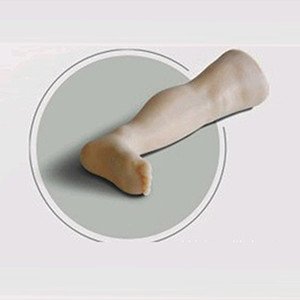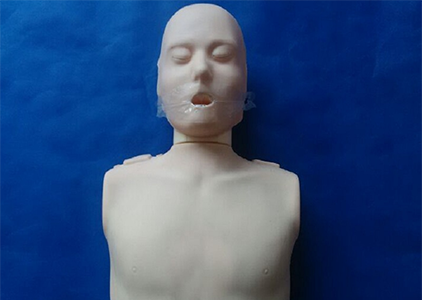
In medical education and clinical training, accurate simulation tools are essential for skill development. Pediatric bone piercings, especially in emergency situations, are often one of the most challenging procedures. The bone marrow cavities of children are smaller and more detailed than those of adults, which requires the operator to perform the puncture with great precision and skill.
1. Manifestation of simulation difficulties:
By reproducing the complexity of children's bone structure, the pediatric bone puncture model can provide trainees with a training experience that is very close to the clinic. The design of the model simulates the flexibility, density and resistance of children's bones during acupuncture, which greatly improves the realism of the trainees' operation. In the simulation training, participants were able to experience how to deal with various challenges in bone piercing, such as positioning accuracy, piercing depth control, and operating stability.

2. Clinical significance:
Bone puncture is mostly used in the treatment of acute severe cases in children, such as bone marrow transplantation, fluid supplementation and drug injection, and bone puncture has become an important intervention means. The training model allows participants to practice repeatedly and overcome technical difficulties without clinical manipulation. Through simulation training, participants gain a better understanding of the characteristics of children's bones and how to optimize piercing procedures to reduce pain and risk to children.
3. Educational Value and effect:
According to a number of studies, simulation training can significantly improve students' skill mastery and self-confidence than traditional classroom teaching. Through the pediatric bone puncture model, students can not only practice the puncture technique, but also adjust and improve through immediate feedback. Simulation training is especially suitable for medical students and first responders to perform frequent, high-quality exercises that help them perform quickly and accurately in real clinical situations.
4. Data support:
According to recent educational studies, the success rate of clinical operations is significantly improved with repeated training using professional models. For example, after simulation training, students' error rate in actual clinical operations was reduced by 20-30%. This type of model is also considered a core tool in medical education, as it is able to improve the student's level of operation with low risk.
Conclusion:
Through accurate simulation, the pediatric bone puncture model helps students overcome the difficulties in clinical operation and improve their operation ability in emergency and high-risk situations. It can not only meet the needs of medical education and first aid training, but also significantly improve the clinical self-confidence and practical skills of students, and is an indispensable teaching tool.







Sophie Asveld
February 14, 2019
Email is a crucial channel in any marketing mix, and never has this been truer than for today’s entrepreneur. Curious what to say.
Sophie Asveld
February 14, 2019
Email is a crucial channel in any marketing mix, and never has this been truer than for today’s entrepreneur. Curious what to say.